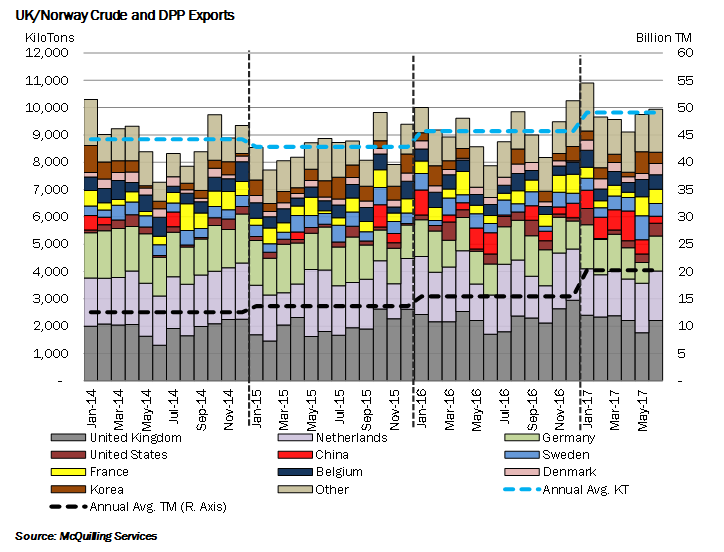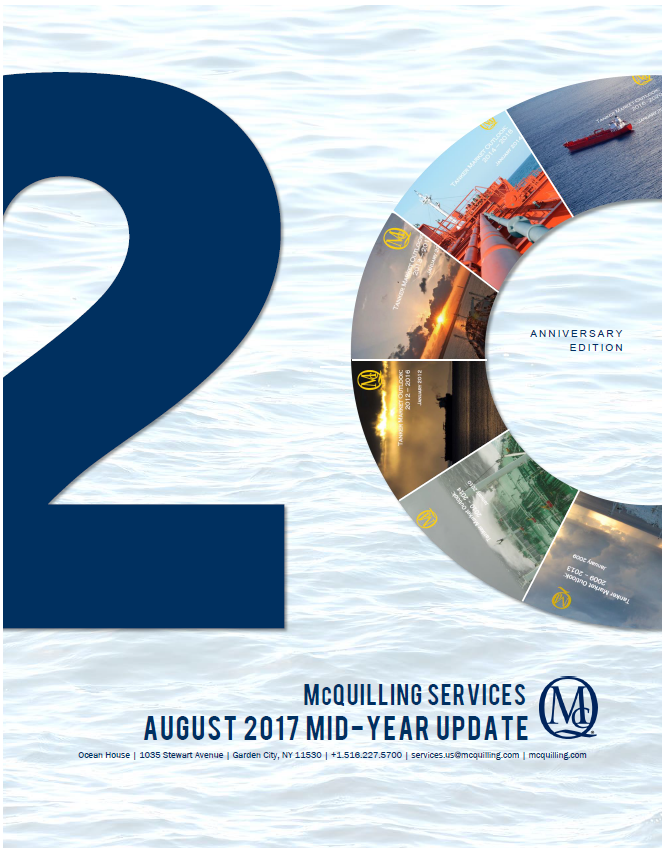Crude Strength Will Be Short-Lived
Sept. 21, 2017
A steady flow of Northern European crude has been making its way to Asia this year as OPEC production cuts continue to boost pricing for Middle Eastern grades and push Eastern refiners to source barrels from the Atlantic Basin. Crude and dirty product volumes out of the United Kingdom and Norway over the first half of 2017 averaged 680,000 tons per month higher year-on-year with a 35.7% rise in volumes to China and a 42.5% increase to Korea (Figure below). Higher Chinese imports can also be attributed to China National Offshore Oil Corporation (CNOOC) becoming the largest oil field operator in the North Sea late last year. Additional support has stemmed healthy production levels within the region; however, we have observed a recent boost in pricing amid Forties oil field maintenance, which is the likely cause of lower VLCC loadings over August and September.
We expect the rise in pricing to be relatively short-lived as maintenance ends and recently commissioned projects, such as the BP’s Clair Ridge and Statoil’s Mariner fields, begin operations in the UK, boosting Northern European crude production to over 2.8 million b/d over the final three months of 2017. This additional supply coupled with a wide array of competitive alternatives in West Africa and the US is likely to pressure pricing and support more arbitrage flows to the East, in the context of an expected 500,000 b/d deficit of crude in Asia over the October-December period.

Order a copy of McQuilling Services 2017 Mid-Year Tanker Market Update

The Mid-Year Tanker Market Outlook Update provides an outlook for spot market freight rates and TCE revenues for 19 major tanker trades, including two triangulated trades, across eight vessel classes for the second half of 2017 and the remaining four years of the forecast period to 2021. We revisit our forecasting process at the mid-year point, distilling data from the first half of the year to better understand recent market developments and expectations for the future. In our view, this process allows us to accurately adjust our forecasts and provide additional value to our clients.









